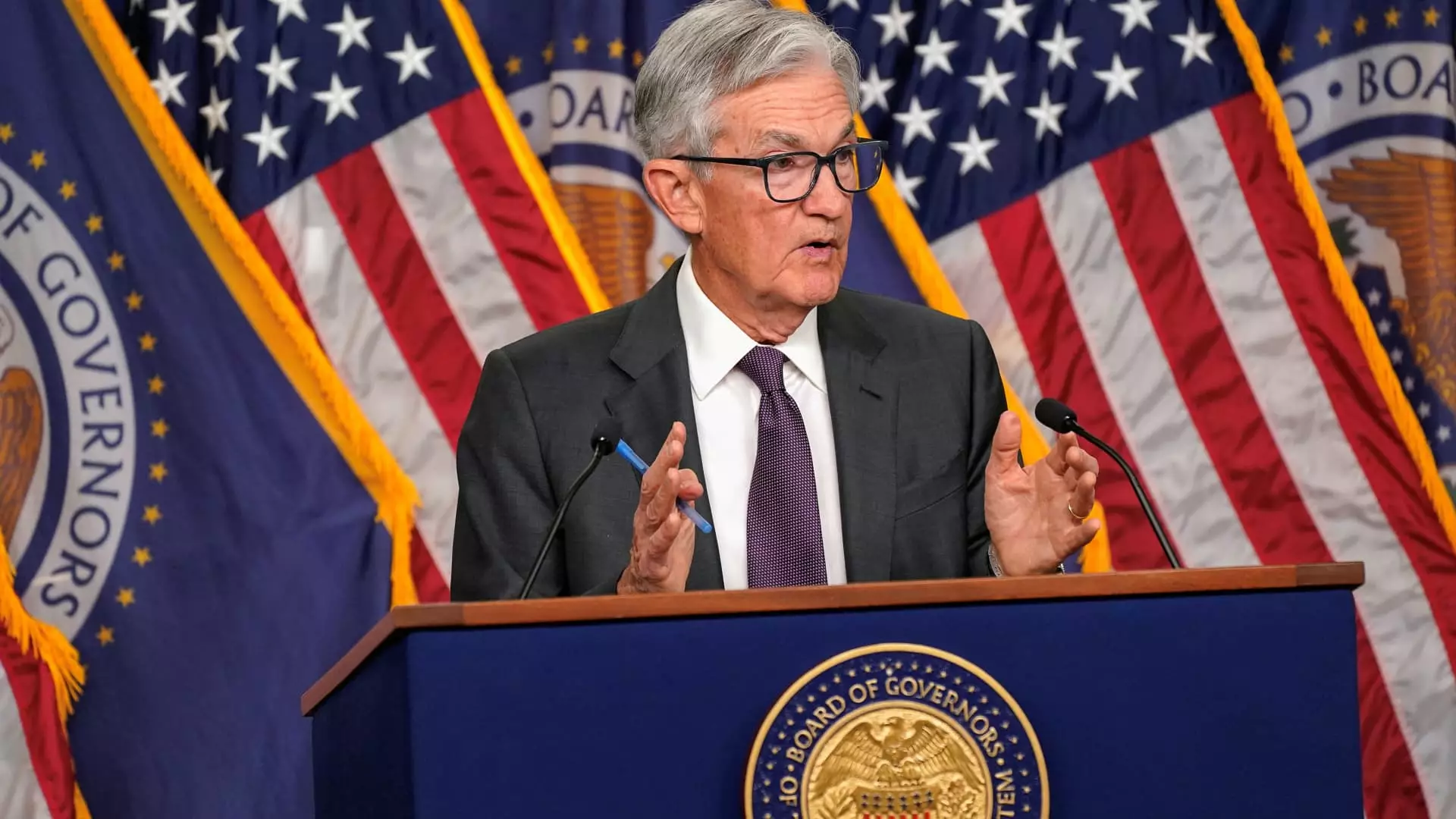In a world brimming with economic uncertainty, the Federal Reserve’s recent decision to hold interest rates steady has sent ripples through the financial markets. Maintaining the benchmark interest rates between 4.25%-4.5% is a clear indication that the Fed is treading cautiously amidst a turbulent economic landscape. While this choice might have been perceived as a sign of stability, the underlying apprehension tied to President Trump’s tariffs and their ripple effect on domestic growth illustrates a deeper malaise. We must confront a harsh reality: the Fed is grappling with a precarious balance sheet, where maintaining existing policies could yield more negative consequences than affirmative.
The decision not to cut rates during this meeting, despite market predictions, casts a shadow over future economic growth. One could argue that the Fed’s reluctance speaks volumes about the lack of confidence in the fiscal policy arena. Investors are clinging to the hope of upcoming rate cuts; however, the ambiguous language and the Fed’s intent to maintain policy restraint suggest a more reluctant approach to easing monetary conditions. The notion encourages skepticism about the efficacy of market reactions, given that uplift relies heavily on the Fed’s next steps, many of which are cloaked in uncertainty.
A Cautious Economic Outlook: Growth at Risk
Surprisingly, the Fed has downgraded its growth forecasts for the year. An expected acceleration of only 1.7% reflects a declining belief in robust economic conditions. With inflation projected to grow at an annual pace of 2.8%, concerns about consumer spending and labor market fragility weigh heavily on the central bank’s perceptions. The dual mandate of the Fed—maintaining full employment and price stability—is at a crossroads, where achieving one goal may compromise the other.
One would be remiss not to question the long-term ramifications of such economic stagnation. As consumers anticipate inflation rising due to tariffs, the question arises: do we risk stymying consumer confidence further by allowing rates to remain unchanged for too long? While cautious policy may be warranted, it also heralds a stagnation in growth, leaving behind the ambition to foster a thriving economy. The incongruity of striving for full employment while simultaneously constraining the tools available to achieve that goal complicates the outlook and raises ethical questions regarding economic policy.
Market Reactions: A Fragile Optimism
After the Fed’s announcement, it was fascinating to observe the fleeting rise of the Dow Jones Industrial Average by over 400 points. Investors seem more willing to embrace optimism than the underlying facts of economic uncertainty. This volatility exposes a broader issue: an overreliance on the Fed’s decisions, where market momentum aligns too closely with monetary policy shifts. It indicates a problematic dependency on easy money rather than fundamental economic strength.
In this context, the continued adjustment of the quantitative tightening program and modifications to bond holdings cannot be underestimated. While some analysts viewed the scaling back as a tacit easing of financial conditions, the truth remains that these measures are not unequivocal indicators of economic health. Rather, they suggest a Fed that is navigating trepidation—a reality investors must reckon with if they wish to protect their portfolios.
Implications of Tariffs: An Economic Dilemma
The shadow of tariffs looms large, tethered to the current economic forecast and carrying severe ramifications for the growth trajectory. The uncertainty surrounding additional tariffs only aggravates consumer sentiment, pushing inflation expectations higher. In turn, this creates a vicious cycle where increased prices further dampen spending, leading to an eventual contraction in economic activity.
As consumers become increasingly rattled by government decisions, they reflect that anxiety through their spending patterns. The labor market is showing cracks—nonfarm payroll numbers fell short of expectations, hinting at a precarious labor environment that could worsen if tariffs continue to stifle growth. Thus, while the government may regard tariffs as necessary tools for negotiation, they present a genuine risk to both consumer confidence and broader economic growth. This dilemma reveals the interconnected web of fiscal policy where each decision reverberates unpredictably across the economy.
Looking Ahead: Navigating an Evolving Economic Environment
With the Federal Reserve grappling with ambiguous economic indicators, it’s essential for stakeholders to maintain a realistic perspective. While potential rate reductions may provide a temporary reprieve, they must not distract from the underlying fragility of the economy. It’s crucial to navigate the evolving landscape with a critical eye, questioning the sustainability of currently perceived strengths.
In a world where political decisions impact economic realities, we must demand accountability from our leaders and maintain an informed, nuanced discourse surrounding fiscal and monetary policy. It is only through rigorous analysis and engagement with these challenges that we can hope to build a resilient economic future that prioritizes genuine growth over short-term gains.

